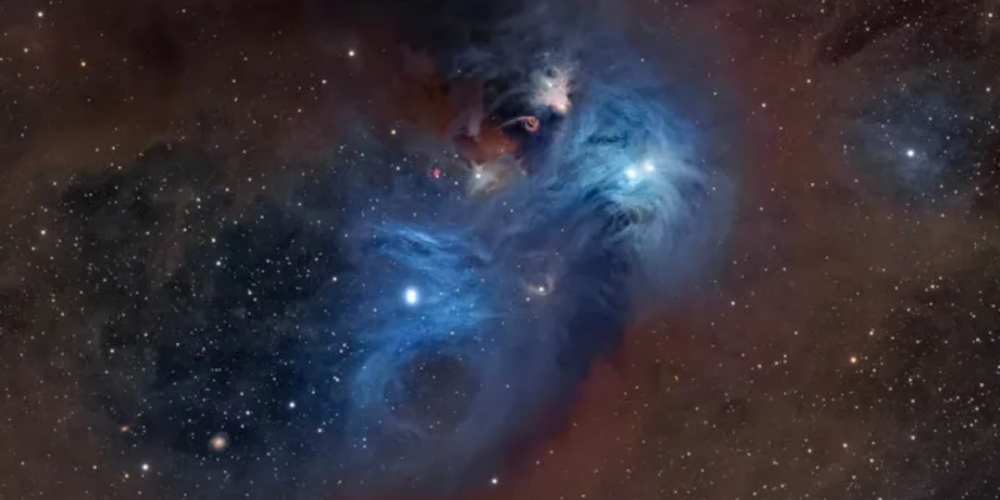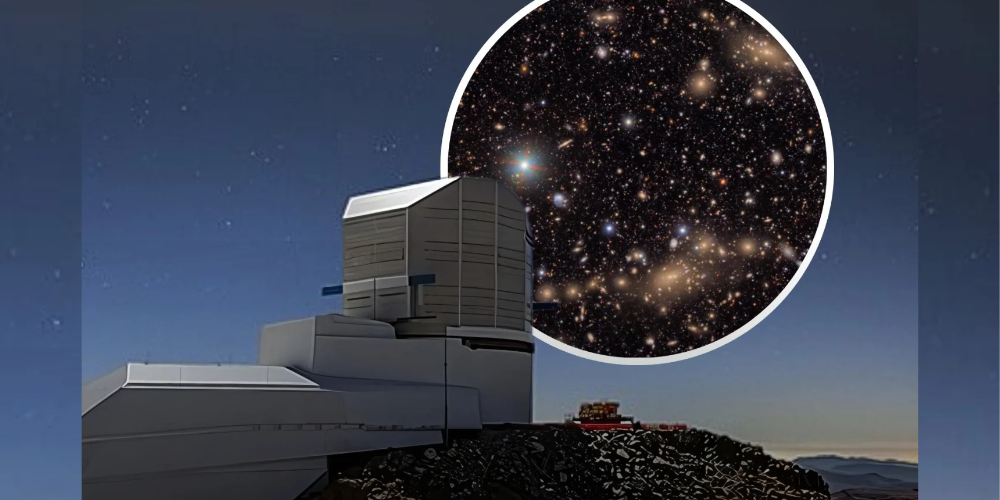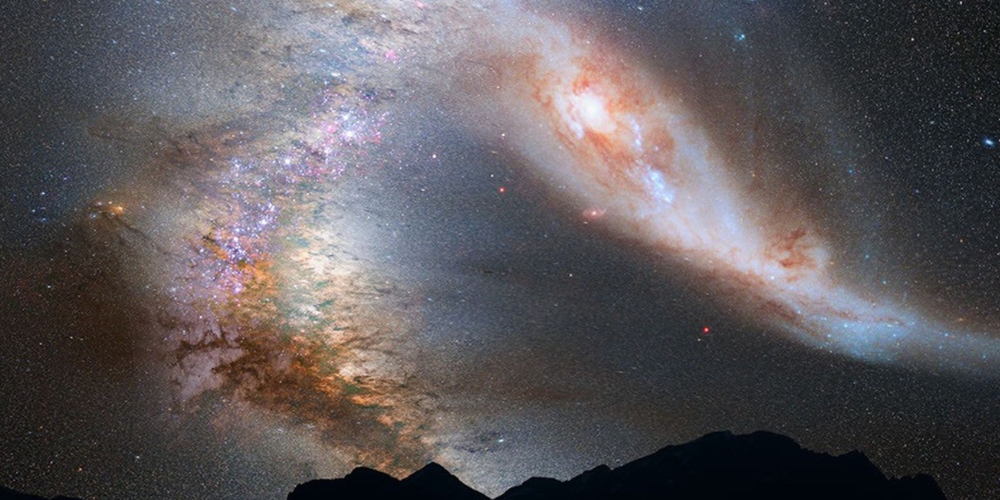There’s something magnetic about Sagittarius. This zodiac sign, active from November 22 to December 21, carries a spark that feels instantly recognizable—bold, curious, and constantly on the move. Sagittarius blends passion, intensity, and flexibility in a way that sets them apart. Their symbol, the archer, reflects a spirit that shoots toward distant horizons, eager to uncover meaning in places many people would skip. From remote rivers to historic sites filled with forgotten stories, Sagittarius pursues knowledge with an energy that rarely slows down. The Core Nature of Sagittarius Sagittarius is the final fire sign, and its traits burn with motion and curiosity. This sign is mutable, which explains its constant pull toward change and exploration. Freedom...
In his newest deep-space image, astrophotographer Greg Meyer turns the cosmos into a canvas. His subject — a nebula shaped like a furious baboon — has been dubbed the Rampaging Baboon Nebula. Streams of gas and dust weave through the frame, glowing in hues that give the scene a startling sense of movement. The photograph spotlights the complex beauty and creative chaos that define our galaxy’s stellar nurseries. A Nebula Like No Other The nebula lies about 500 light-years away in the constellation Corona Australis. Its shape suggests the face of a mandrill, with molecular dust sculpting the mouth and facial contours. The bright blue eyes are created by reflection nebulas that scatter starlight, adding a...
Mars has always been a planet of mystery, but fresh research suggests the Red Planet hides something far more unusual beneath its surface. Instead of a neatly layered interior, scientists have discovered that Mars’ mantle may be filled with giant chunks of rock left over from its violent early years. This finding reshapes the way experts view the inner structure of the planet and offers a rare glimpse into conditions dating back more than 4 billion years. Mars’ Messy Interior When most people think about the inside of a planet, the picture is often a series of tidy layers stacked one on top of another, like a clean geological cake. Mars, however, refuses to fit that...
Lightning might seem like a sudden burst from the sky, but the science behind it runs deep—and recent research has added an electrifying twist. Scientists have long known that thunderstorms build electrical charges until they discharge in brilliant flashes of lightning. What’s new is the evidence pointing to an unexpected trigger: cosmic rays. Researchers at Los Alamos National Laboratory have uncovered clues that suggest lightning may actually start with particles from outer space, opening a fresh angle on this natural phenomenon. A Shift in Understanding Thunderclouds have always been the stage for lightning. Traditional understanding says it begins when opposite charges build up in a storm—positive at the top, negative at the bottom. Once the difference...
The Vera C. Rubin Observatory has officially raised the bar for what “big data” means in astronomy. After releasing its first batch of cosmic images, the observatory isn't just capturing the night sky—it's creating one of the most extensive visual datasets humanity has ever seen. Powered by the world’s largest digital camera, the images are so detailed and expansive that processing them requires not just high-speed networks, but a whole digital ecosystem: seven international data brokers, three massive data centers, and a uniquely named management system called the Data Butler. The Scale of Rubin’s Cosmic Images What makes Rubin Observatory's contribution truly staggering is the sheer volume and precision of the data it collects. Once it...
In a groundbreaking observation, astronomers have captured an extraordinary moment in the cosmos—a high-speed, high-stakes confrontation between two galaxies over 11 billion light-years away. This isn’t just any merger. It’s a rare, aggressive event where one galaxy is striking the other with intense quasar radiation, dramatically changing its ability to form new stars. This unprecedented sighting is now offering a deeper look into how galaxies interact, evolve, and sometimes collide with devastating consequences. The "Cosmic Joust"—When Galaxies Collide Researchers used the combined power of ALMA and the Very Large Telescope (VLT) in Chile to observe two galaxies locked in what they describe as a “cosmic joust.” The term goes beyond metaphor—it reflects the actual movement. These...
Here’s Everything You Need to Know About Cosmic Rays
Cosmic rays, mysterious particles from the cosmos, have captivated scientists and astronomers alike with their enigmatic origins and profound implications for understanding the universe. These particles, traveling at nearly the speed of light, bring tales from the far reaches of space right to our doorstep.
What Are Cosmic Rays?
Cosmic rays are not rays at all but rather incredibly fast-moving particles that originate from outer space. Predominantly made up of protons, these particles are remnants of atoms stripped of their electrons, revealing their bare nuclei. Earth is bombarded daily by trillions of these particles, though most are harmlessly deflected by our planet’s atmosphere and magnetic field. When cosmic rays do collide with atmospheric particles, they generate a cascade of secondary particles that can reach the ground, providing scientists with valuable data about their journey through space.

Kjpargeter | Freepik | Cosmic rays are not rays but incredibly fast-moving particles originating from outer space.
The Historical Path to Discovering Cosmic Rays
The quest to understand cosmic rays began in earnest in the early 20th century, with pioneering experiments that revealed their existence and extraterrestrial origin. In 1912, Victor Hess made a groundbreaking balloon flight that demonstrated increased radiation with altitude, pointing to a source beyond Earth’s atmosphere. This discovery earned him the Nobel Prize and paved the way for further research. Nobel laureate Robert Millikan coined the term “cosmic ray” itself in 1925, although we now understand these phenomena to be particles rather than rays.
The Origins and Sources of Cosmic Rays
Identifying the origins of cosmic rays poses a significant challenge due to the deflection of these charged particles by magnetic fields in space. However, scientists can infer the cosmic events capable of producing such high-speed particles by measuring their energies. Supernovas, black holes, neutron stars, and even collisions of galaxies are all potential cosmic factories churning out cosmic rays. These particles serve as messengers, offering clues about the violent processes that govern the cosmos and the universe’s structure.

Pixabay | Pexels | Earth is bombarded daily by trillions of these particles, though most are harmlessly deflected by our planet’s atmosphere and magnetic field.
Cosmic Rays as Probes of the Universe
Cosmic rays have proven instrumental in deepening our understanding of the universe. By studying these particles, scientists have discovered new subatomic particles like the positron and the muon, expanding the field of particle physics. Moreover, cosmic rays have provided insights into the chemical composition of the universe and the dynamic processes occurring around supermassive black holes and during stellar explosions.
Detecting Cosmic Rays
Scientists employ various detection methods to study cosmic rays on the ground and in space. Ground-based observatories like the Pierre Auger Observatory in Argentina and the High Altitude Water Cherenkov Observatory in Mexico are crucial in tracking these particles. Additionally, instruments aboard balloons and spacecraft, such as NASA’s Parker Solar Probe and the Voyager satellites, capture cosmic rays in their detectors, offering a clearer picture of cosmic radiation across different environments.

Wirestock | Freepik | Scientists employ various detection methods to study cosmic rays on the ground and in space.
The Unresolved Mysteries of Cosmic Rays
Despite over a century of research, many questions about cosmic rays still need to be answered. Their exact sources, the mechanisms behind their acceleration to extreme energies, and their potential impacts on climate and planetary systems continue to elude full understanding. The high-energy cosmic rays, in particular, challenge our current knowledge, as their origins could be as exotic as starburst galaxies or the tumultuous regions surrounding supermassive black holes.
While largely benign to life on Earth due to our protective atmosphere and magnetic field, cosmic rays pose significant challenges to space travel and the operation of spaceborne equipment. As we venture further into space, understanding and mitigating the effects of cosmic rays will be crucial for astronauts’ safety and the success of interplanetary missions.
The study of cosmic rays stands at the intersection of particle physics, astrophysics, and cosmology, offering a unique perspective on the universe’s most energetic phenomena. As technology advances and our observational capabilities improve, the secrets of cosmic rays are slowly being unraveled, promising to shed light on the darkest corners of the universe and the most energetic events in cosmic history.













